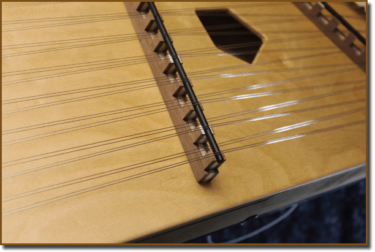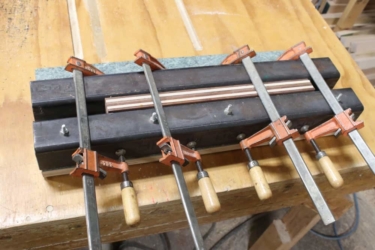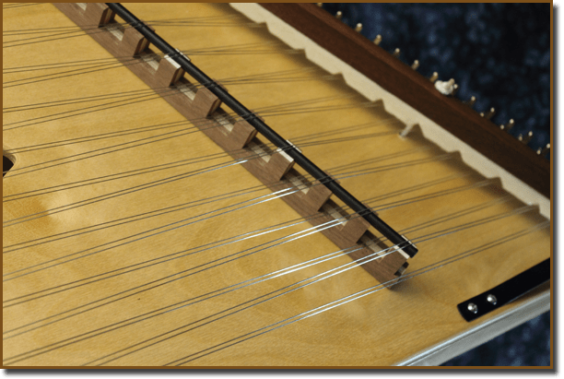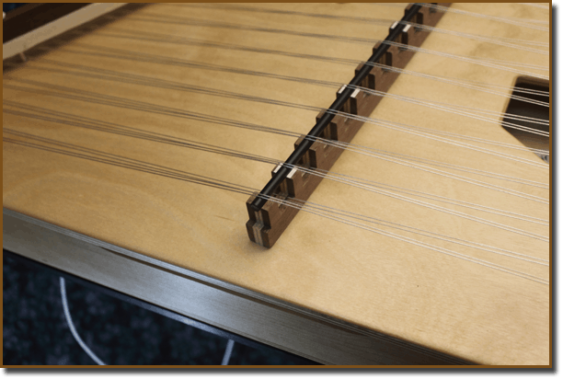Why Laminated?
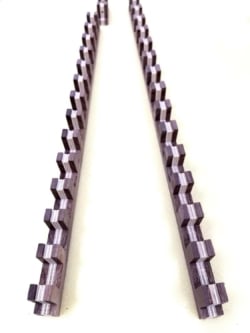 One of the biggest reasons why hammered dulcimers can go out of tune is due to the bridges shrinking and swelling. This is directly related to changes in the humidity of the environment. During fluctuations of humid air, wood shrinks or swells across the grain. For bridges, this affects their height.
One of the biggest reasons why hammered dulcimers can go out of tune is due to the bridges shrinking and swelling. This is directly related to changes in the humidity of the environment. During fluctuations of humid air, wood shrinks or swells across the grain. For bridges, this affects their height.
Any change in the height of hammered dulcimer bridges leads to changes in the tension of the strings, and the dulcimer goes out of tune. This is the reason behind lamination. Plywood is built up of layers of wood glued together with grain directions at 90 degrees to the layer above and below. This effectively stops wood movement, and the thinner the laminations and the more plies, the better.
Upgrade Your Hammered Dulcimer with Laminated Bridges
As an option, we make bridges with a core of birch plywood and solid walnut on the outside. You can see the ply core sandwiched between the walnut, giving it a unique look.
The ply core limits the shrinkage or swelling of the bridge, and really helps with tuning stability. Even though laminated bridges don’t completely solve the problem (you’ll still have to tune–sorry!) because the dulcimer is still moving underneath them. But they really do help!
Chris has found that they don’t affect hammered dulcimer sound at all. He had a set on his dulcimer that he played every week all year, and it stayed well in tune. Some weeks, it didn’t need tuning at all.
To order laminated bridges with your dulcimer purchase, simply click the corresponding box on the product page. Note: Not all models have this option.


